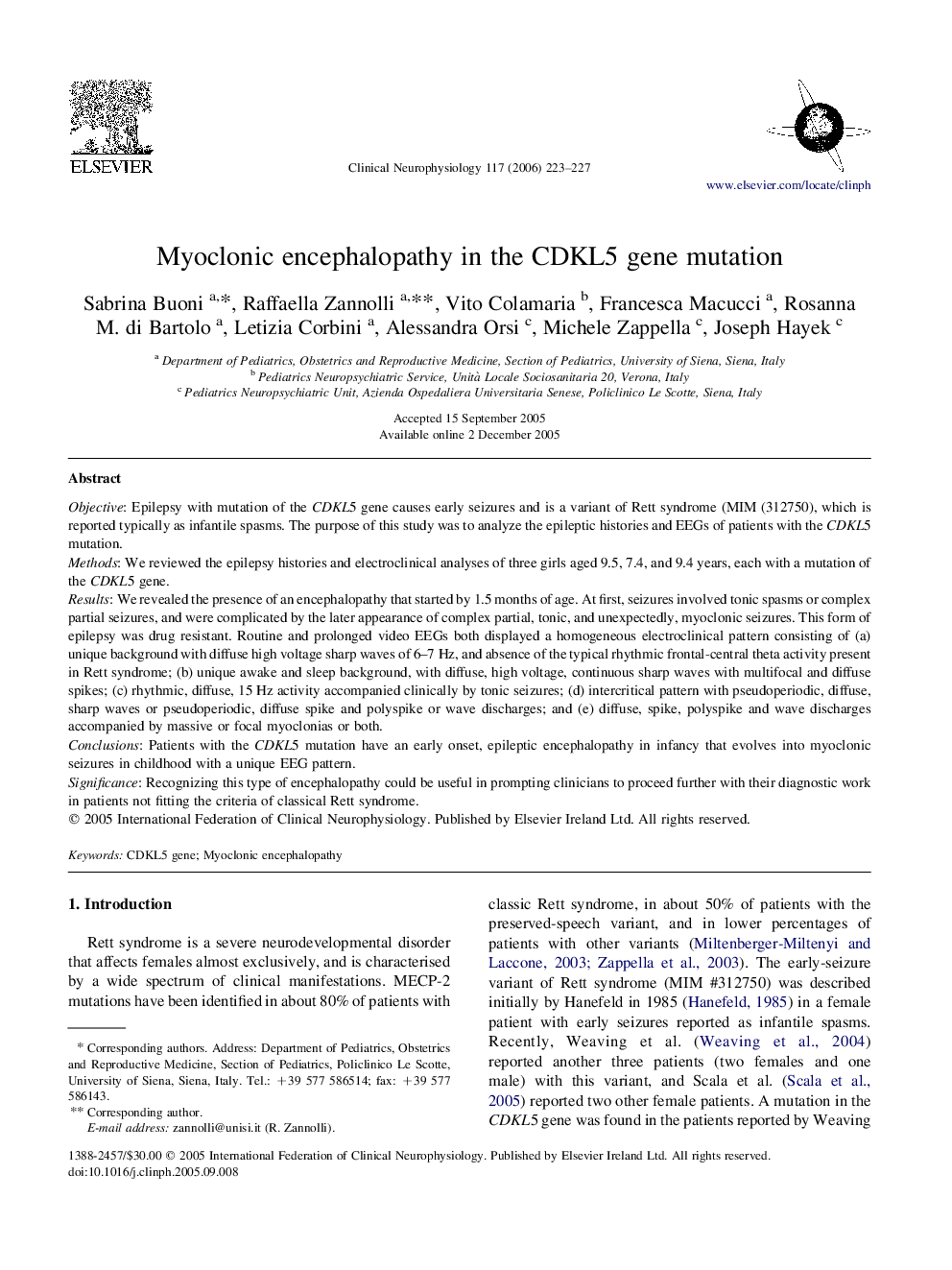| Article ID | Journal | Published Year | Pages | File Type |
|---|---|---|---|---|
| 3048082 | Clinical Neurophysiology | 2006 | 5 Pages |
ObjectiveEpilepsy with mutation of the CDKL5 gene causes early seizures and is a variant of Rett syndrome (MIM (312750), which is reported typically as infantile spasms. The purpose of this study was to analyze the epileptic histories and EEGs of patients with the CDKL5 mutation.MethodsWe reviewed the epilepsy histories and electroclinical analyses of three girls aged 9.5, 7.4, and 9.4 years, each with a mutation of the CDKL5 gene.ResultsWe revealed the presence of an encephalopathy that started by 1.5 months of age. At first, seizures involved tonic spasms or complex partial seizures, and were complicated by the later appearance of complex partial, tonic, and unexpectedly, myoclonic seizures. This form of epilepsy was drug resistant. Routine and prolonged video EEGs both displayed a homogeneous electroclinical pattern consisting of (a) unique background with diffuse high voltage sharp waves of 6–7 Hz, and absence of the typical rhythmic frontal-central theta activity present in Rett syndrome; (b) unique awake and sleep background, with diffuse, high voltage, continuous sharp waves with multifocal and diffuse spikes; (c) rhythmic, diffuse, 15 Hz activity accompanied clinically by tonic seizures; (d) intercritical pattern with pseudoperiodic, diffuse, sharp waves or pseudoperiodic, diffuse spike and polyspike or wave discharges; and (e) diffuse, spike, polyspike and wave discharges accompanied by massive or focal myoclonias or both.ConclusionsPatients with the CDKL5 mutation have an early onset, epileptic encephalopathy in infancy that evolves into myoclonic seizures in childhood with a unique EEG pattern.SignificanceRecognizing this type of encephalopathy could be useful in prompting clinicians to proceed further with their diagnostic work in patients not fitting the criteria of classical Rett syndrome.
